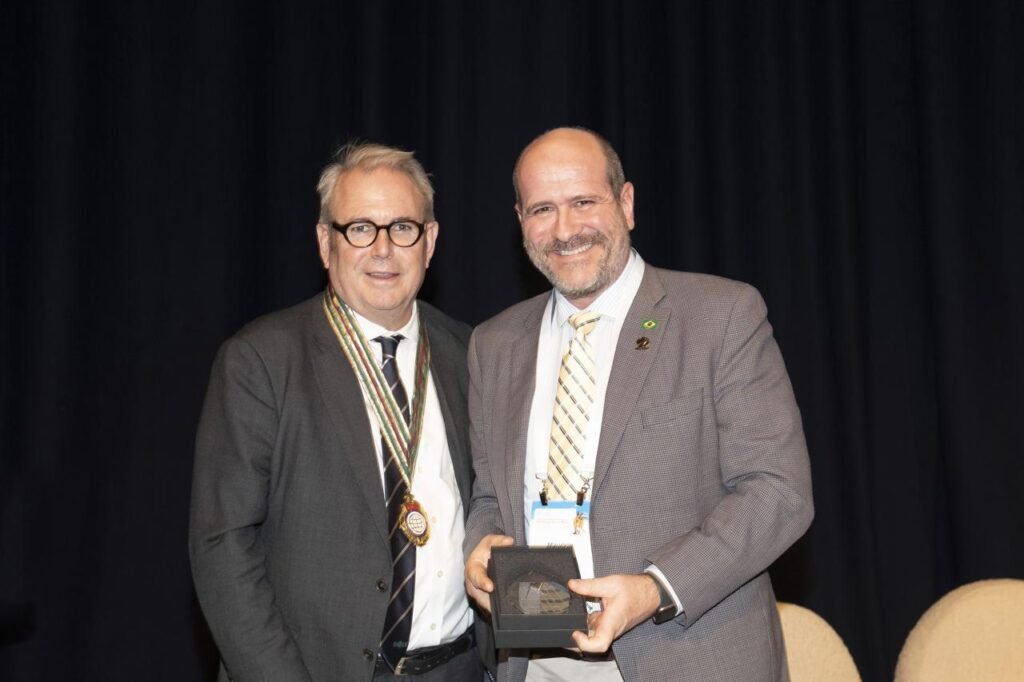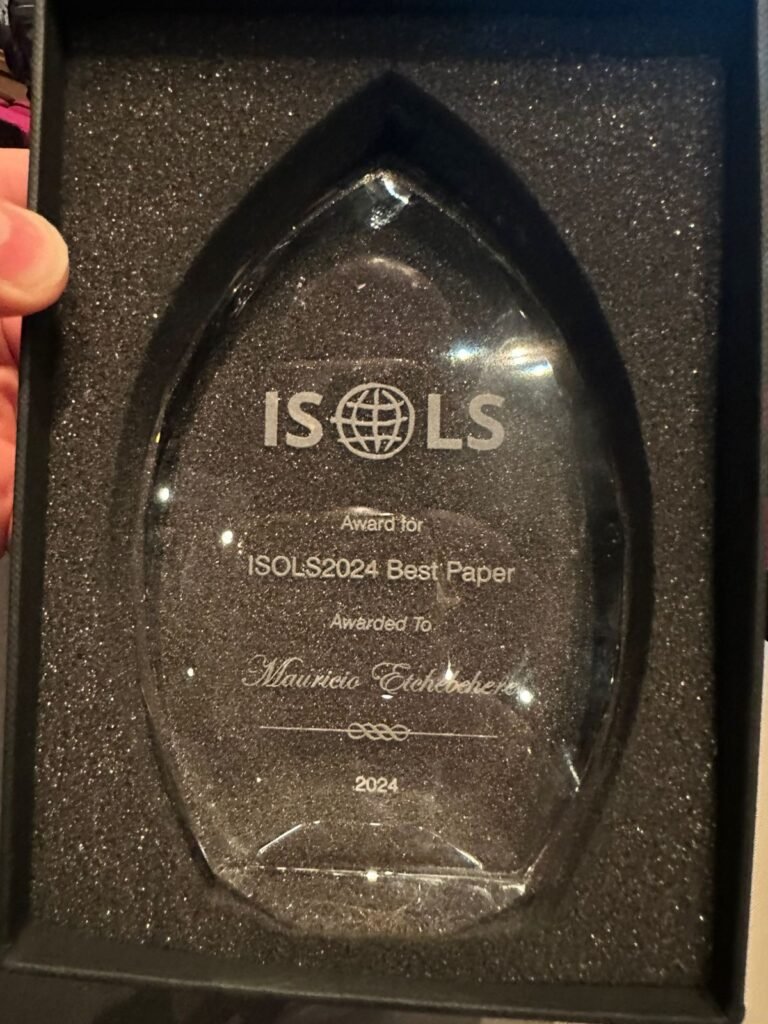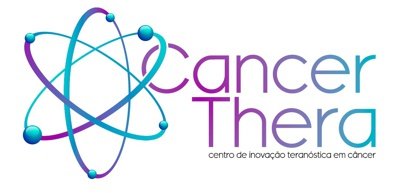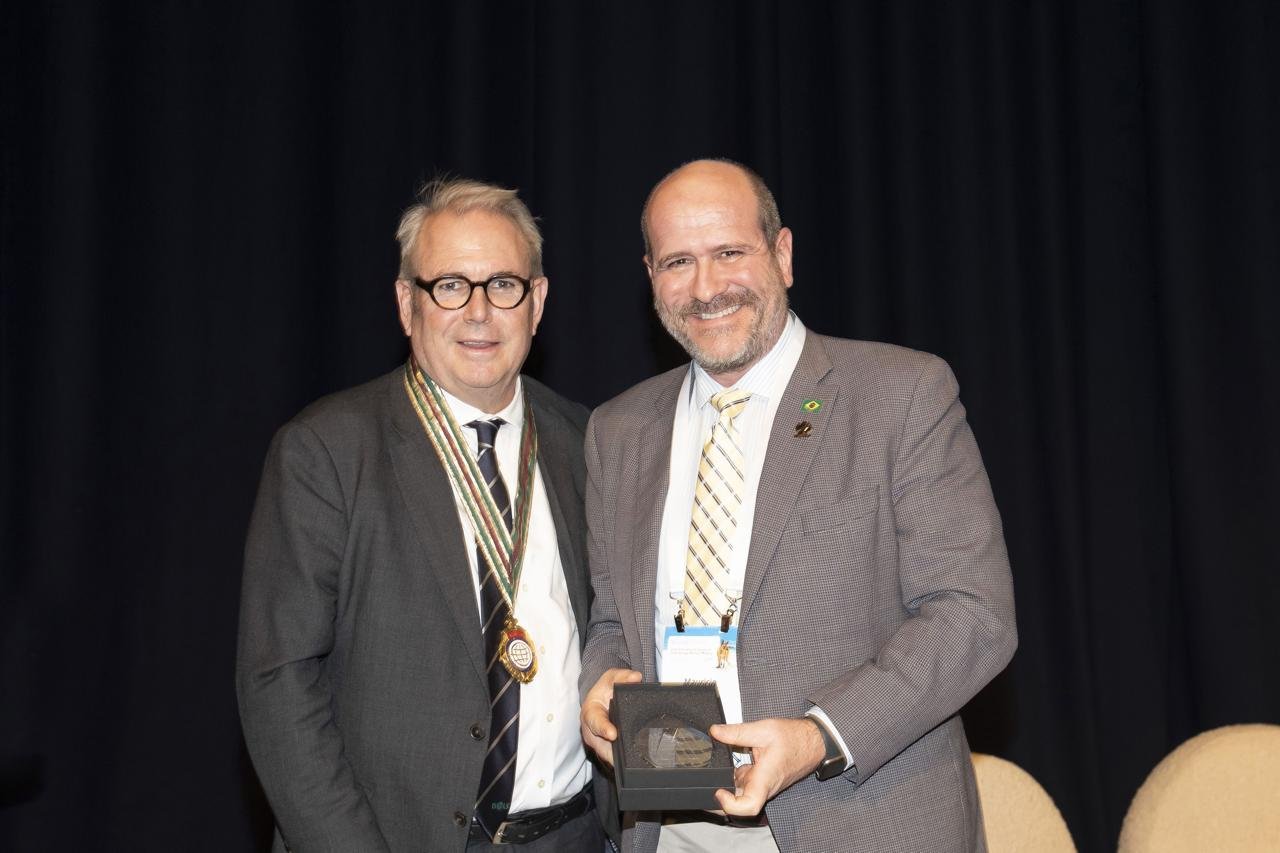On October 11, 2024, in Brisbane, Australia, during the 22nd General Meeting of the International Society of Limb Salvage (ISOLS), Dr. Maurício Etchebehere, orthopedic surgeon, professor at the Faculty of Medical Sciences of the University of Campinas (FCM/Unicamp), and associate researcher at CEPID CancerThera, presented the paper titled “Comparison of PET/CT images with 18F-FDG and 18F-PSMA-1007 in musculoskeletal tumors to evaluate the potential of Theranostics approach.”
The paper is the result of a study that compares PET/CT images of musculoskeletal tumors obtained using the two radiopharmaceuticals mentioned in the title. It stood out for the relevance of its findings, receiving recognition as one of the 25 best papers out of more than 600 submissions from around the world presented at the congress. “We were pleasantly surprised, as this is just the beginning of our study arm, with very preliminary results,” says Etchebehere, expressing the feelings of the research team upon receiving the award news.
The team consists of members from two Unicamp groups: from the Musculoskeletal Tumors Division, Department of Orthopedics, Rheumatology, and Traumatology (FCM/Unicamp), Carlos Eduardo Hideo Hanasilo, Mayara Branco e Silva, and Maurício Etchebehere participated; from the Nuclear Medicine Division, Department of Anesthesiology, Oncology, and Radiology (FCM/Unicamp), Allan de Oliveira Santos, Elba Cristina Sá de Camargo Etchebehere, Gardenia de Oliveira Barbosa, Mariana da Cunha Lopes de Lima, and Natália Tobar participated.

Diagnostic precision, personalized therapeutics
The recognition highlights the importance of using the theranostic approach in orthopedic oncology, enabling not only precise diagnosis but also paving the way for more personalized and effective therapies for patients with complex tumors. The awarded study involved eight patients with advanced and metastatic tumors. The images obtained showed that in five cases, PSMA PET/CT had higher uptake than FDG PET/CT, suggesting that PSMA may be a more effective marker for diagnosing and monitoring these tumors.
This has direct implications for the treatment of sarcomas, which are notoriously difficult to manage due to histological heterogeneity and diverse anatomical locations. One of the most striking cases was that of a patient with a recurrent giant cell tumor in the sacral region, where PSMA showed a standardized uptake value (SUV) of 100, compared to 16 for FDG, demonstrating the superior capability of the technique for certain lesions. Another example involved a patient with osteolytic metastasis from renal carcinoma, where the PSMA SUV was 40, compared to 11 for FDG, reinforcing the ability of PSMA PET/CT to detect metastases with greater precision.
The future of research
This discovery paves the way for broader use of the theranostic approach in the treatment of musculoskeletal tumors. The combination of imaging diagnostics with targeted therapy could revolutionize how healthcare teams approach complex and recurrent cases, offering more personalized and effective treatments.
With the prospect of positively impacting the lives of patients with musculoskeletal tumors, the research by Maurício Etchebehere and his team reaffirms its relevance in precision medicine. “Theranostics is an entirely new approach for musculoskeletal tumors and, especially, for sarcomas. There is much to be studied. We hope to identify tumors that have the potential to be treated with lutetium-PSMA,” explains the researcher.
The recognition at this year’s ISOLS General Meeting is evidence of the study’s importance to global oncology, placing Brazil in the spotlight for the development of new technologies in cancer diagnosis and treatment. “Perhaps, in the not-too-distant future, we will be able to use theranostic radiopharmaceuticals as a neoadjuvant approach before operating on a sarcoma, thereby reducing the possibility of recurrence,” adds Etchebehere, indicating that his group is already working on new research fronts, aiming to expand the clinical use of the theranostic approach.



About the ISOLS 2024 General Meeting
It is one of the largest international congresses dedicated to the advancement of science and clinical practice in orthopedic oncology, attracting physicians, scientists, and researchers from around the world to share the latest innovations in the treatment and limb preservation for patients affected by tumors. The 2024 event featured a wide variety of scientific papers, covering topics ranging from new prosthetic advances to imaging technologies and emerging therapies.
Text: Romulo Santana Osthues | Photos: Personal archive





